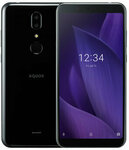Band 28.
Some specifications offered online may not be accurate. Do you own research.
What is PWM? From NOTEBOOKCHECK
PWM is a very rapid frequency of on/off states of the digital signal to achieve a result similar to what could be achieved on a plain Analog signal. If you wanted 70% screen brightness for example, you would simply need to keep the digital signal on for 70% of the time and off for 30% of the time your screen was turned on. This is done rapidly, with the frequency measured in Hertz (Hz), or number of times per second. The faster the frequency, the less noticeable the off states become, until the resulting effect is indistinguishable from what an analog signal would produce.
Is PWM necessary? In short, yes. PWM is used not only for LCD monitor brightness, but most forms of finite control in electronic devices today. Servo motors and fan speed control (you may notice that case fans for a computer will sometimes be rated as with PWM) are two common implementations of PWM. New technology such as what is found in smartphones is too small and designed to use too little power to utilize any alternatives such as analog controllers.
Why does it cause eye strain, nausea and headaches?
Low PWM frequencies on a screen are undesirable by our own standards. This is because low PWM may cause users to complain of eye strain, nausea, and headache, due to the blinking of the screen backlight at a low enough frequency to be noticeable, which causes multiple contractions and expansions of the pupils.
High enough frequencies are less straining on users due to the Flicker Fusion Threshold of the human eye. This function of the eye allows a flickering light at a high enough frequency to appear as if it was steadily on. When the frequency is low enough, the above symptoms can appear and cause problems for the user. Since with LCD monitors the image on a screen is always present and the backlight is what actually flashes, this allows brightness control on a persistent image. Unfortunately, since most screens are marketed and designed to have a higher brightness level than desirable for safe viewing as backed by this study over at Retro-PC-Mania, most users should be using lowered brightness levels for safe viewing (between 30-40% depending on the screen), which makes it more common that users would run into such an issue. It should also be noted that as brightness levels decrease, the need for higher PWM frequencies increase, because with lengthier “off” times, the interval between “on” times must be short enough to keep the steady appearance of the flickering light. For example, take the PWM test of the Dell XPS 15 2016 (9550) Infinity Edge below — it is only easily perceptible at 10% brightness or less.




url is truncated. it should be https://au.banggood.com/SHARP-AQUOS-V-Global-Version-5_9-inc…
no b28, no nfc